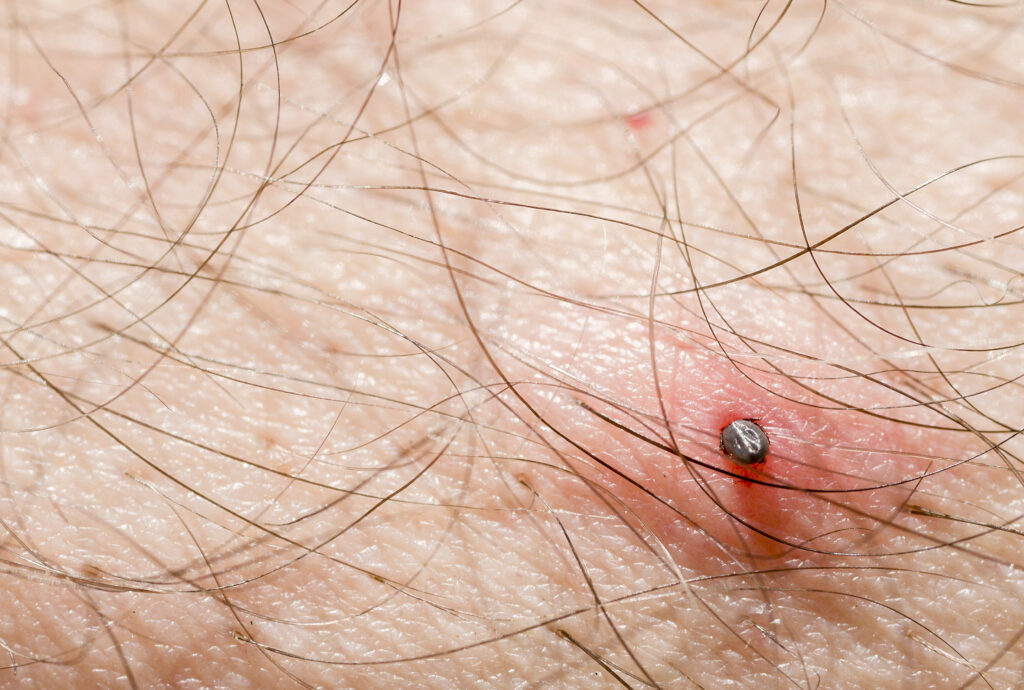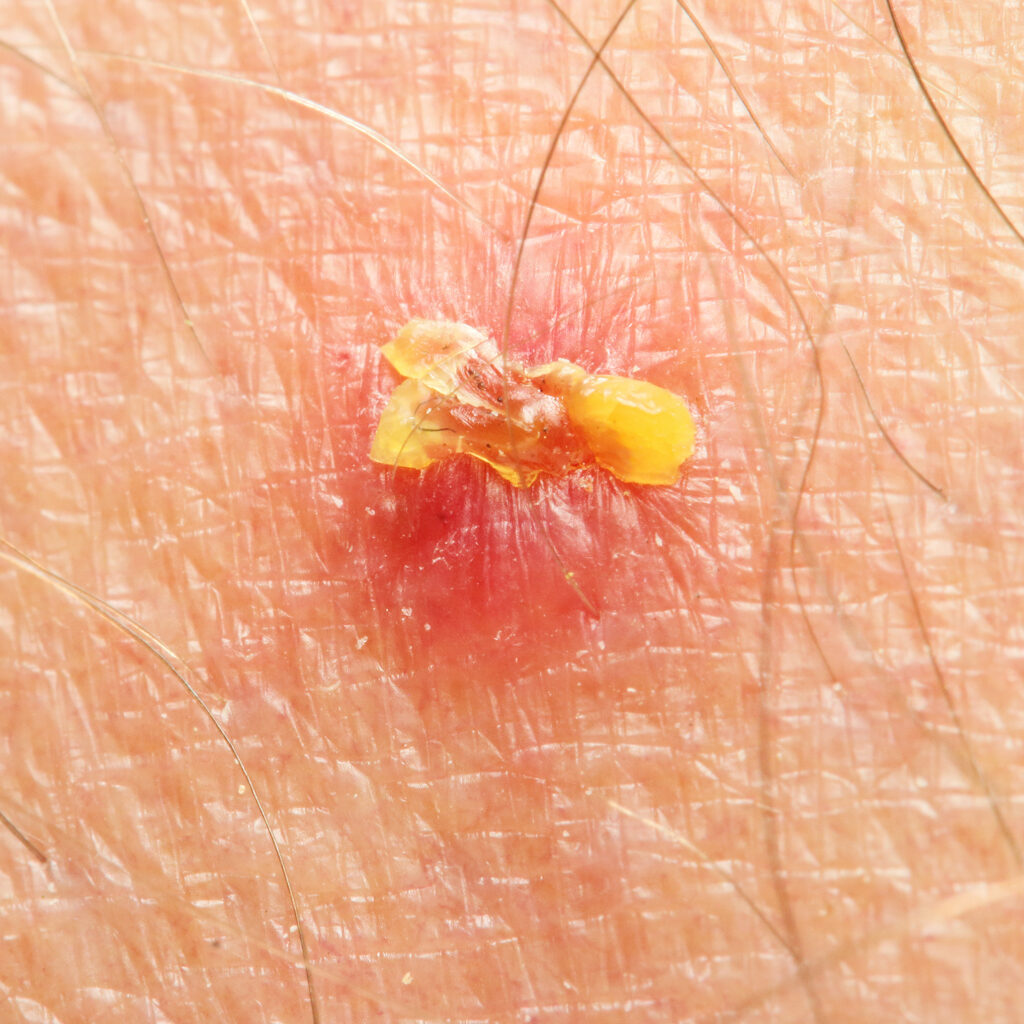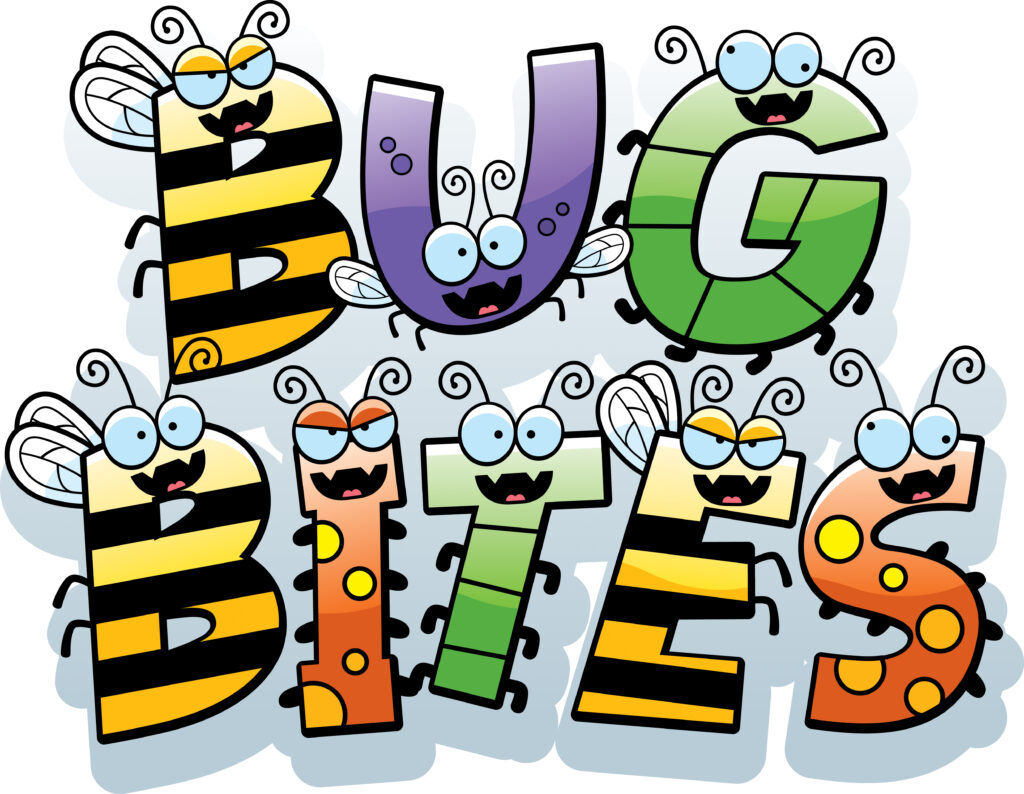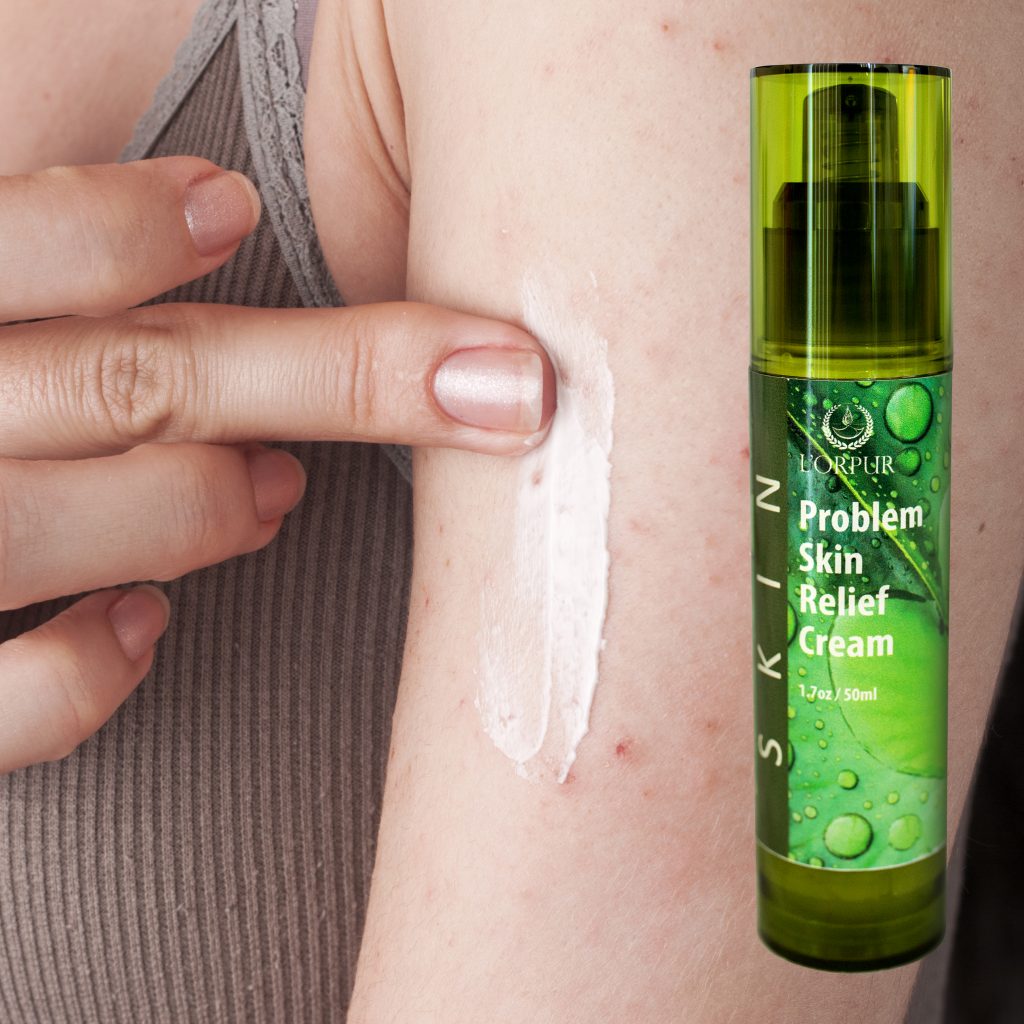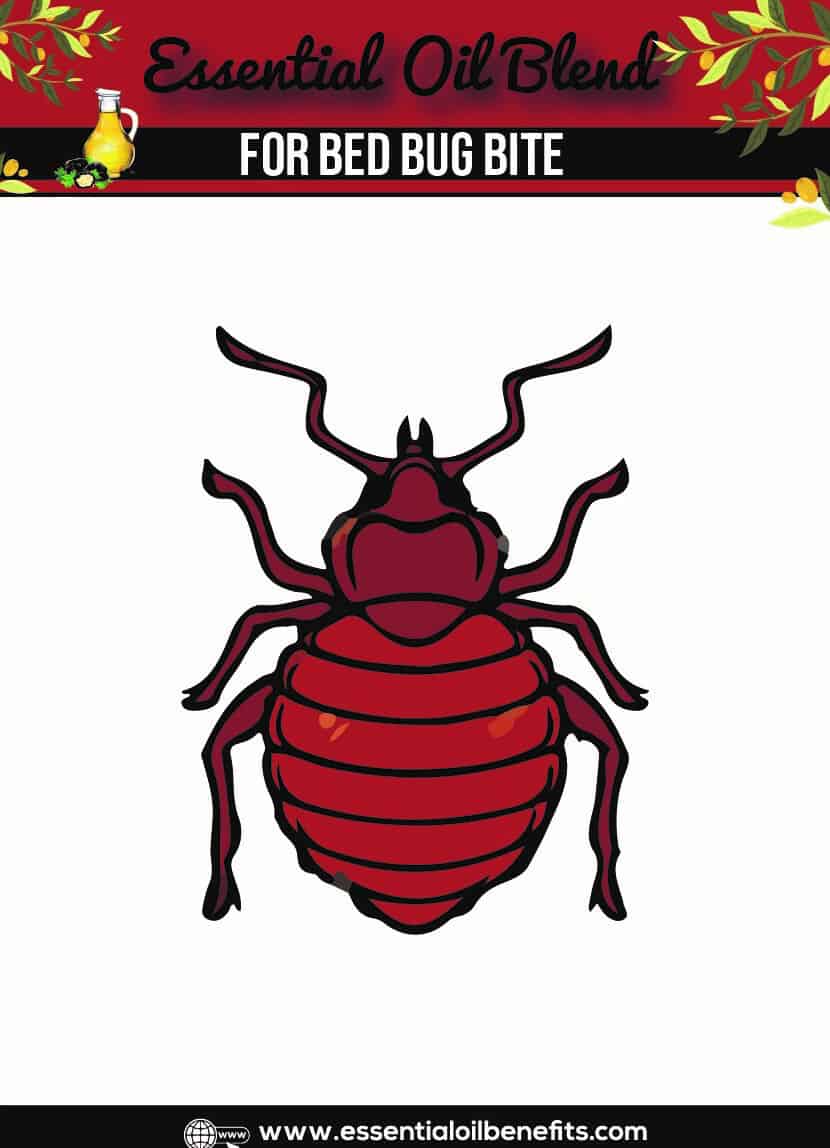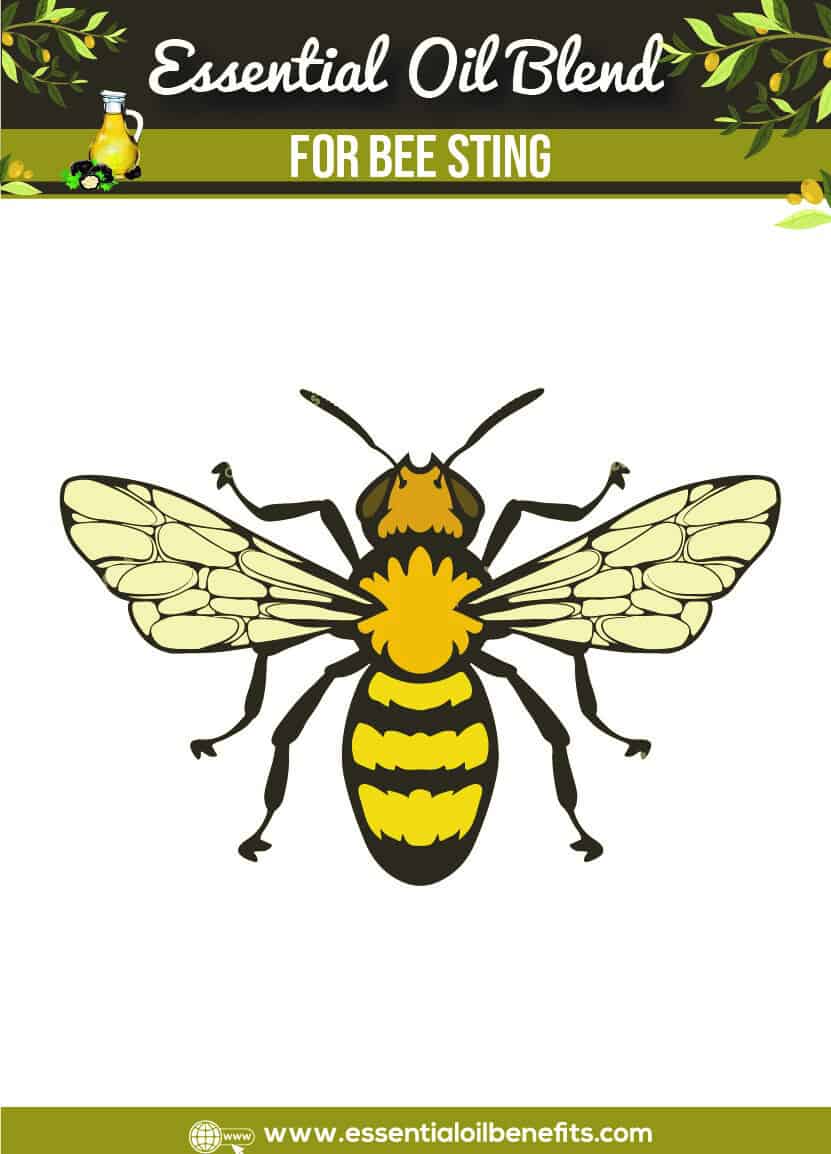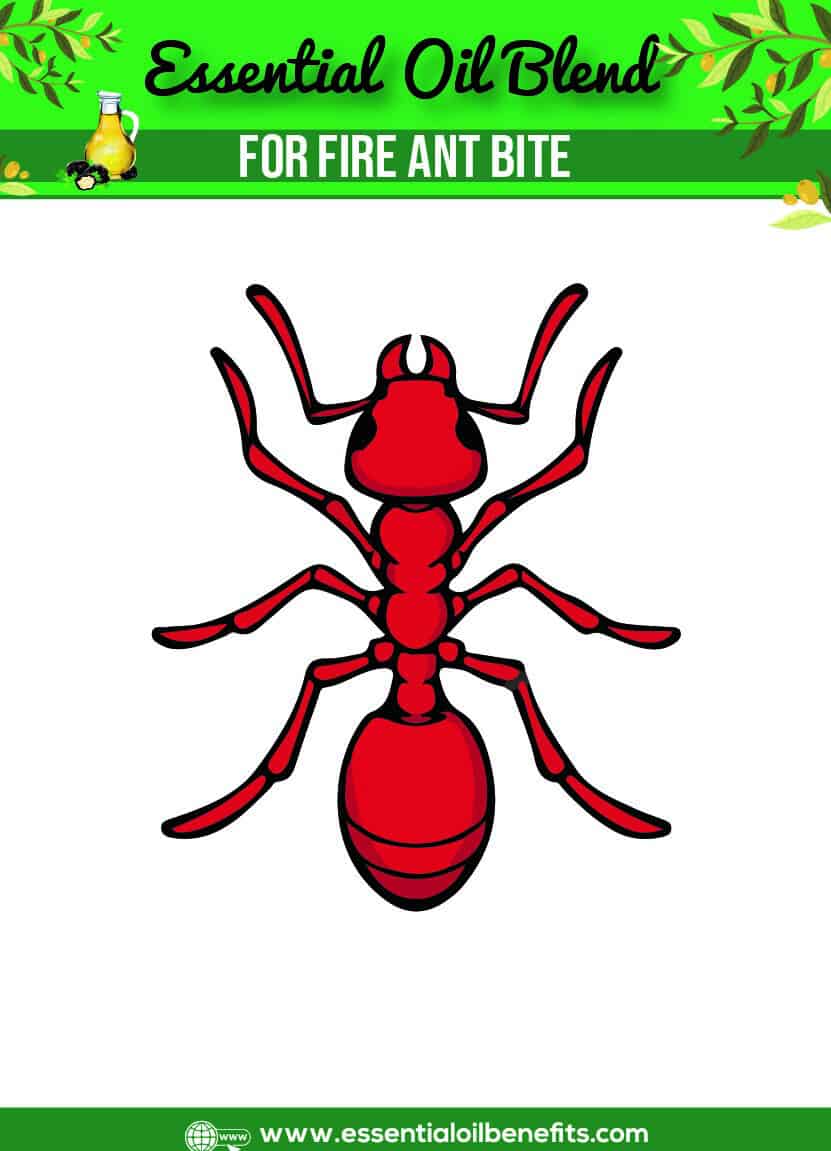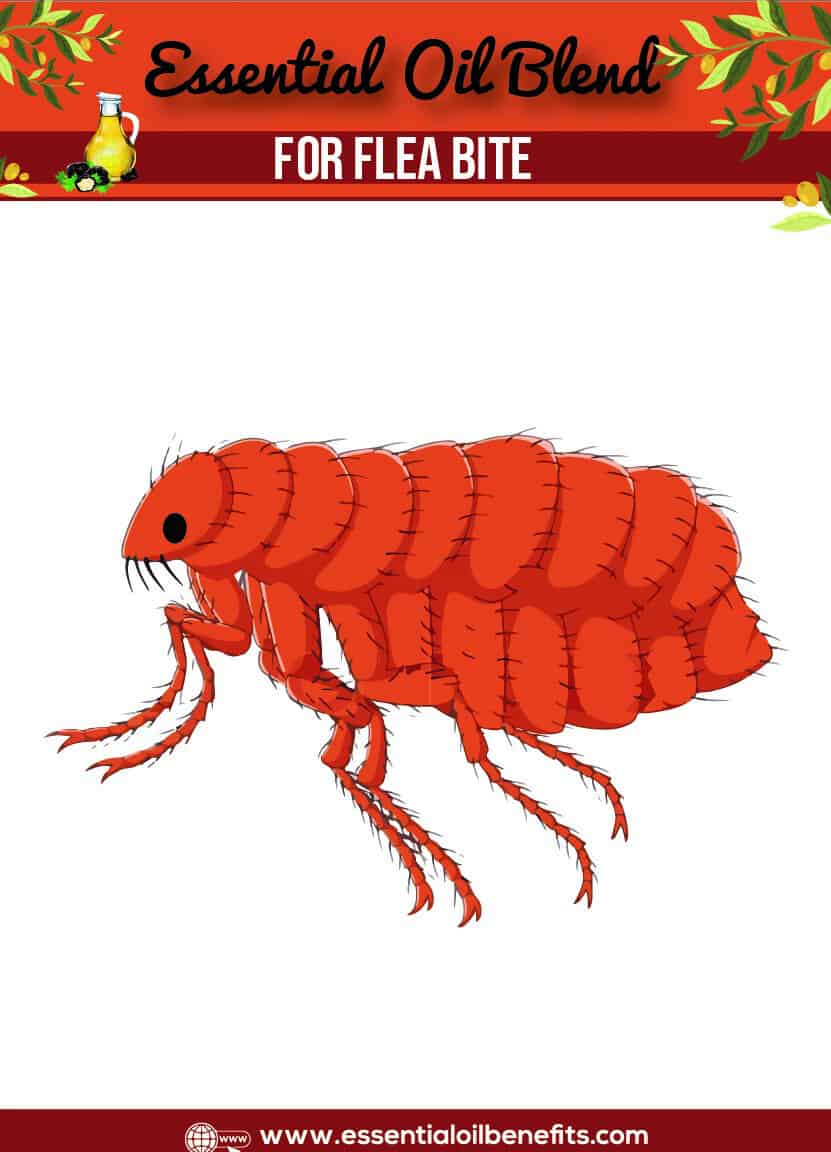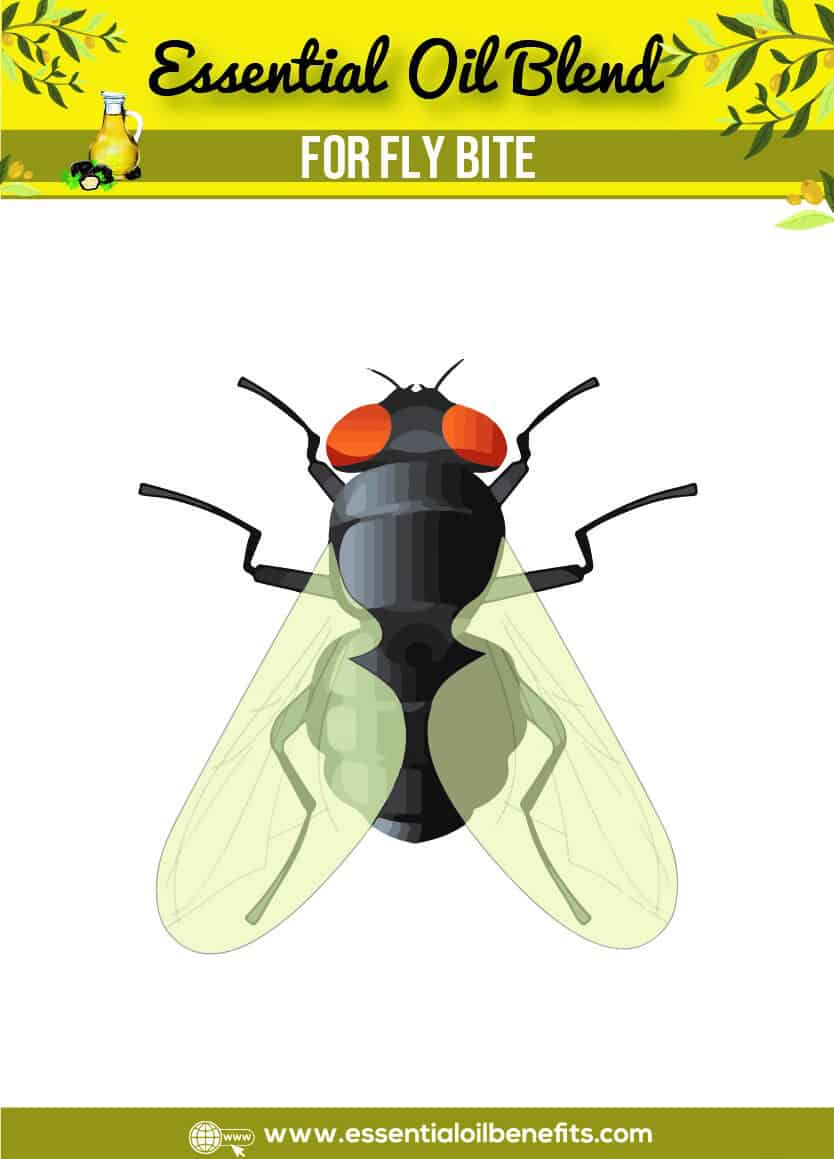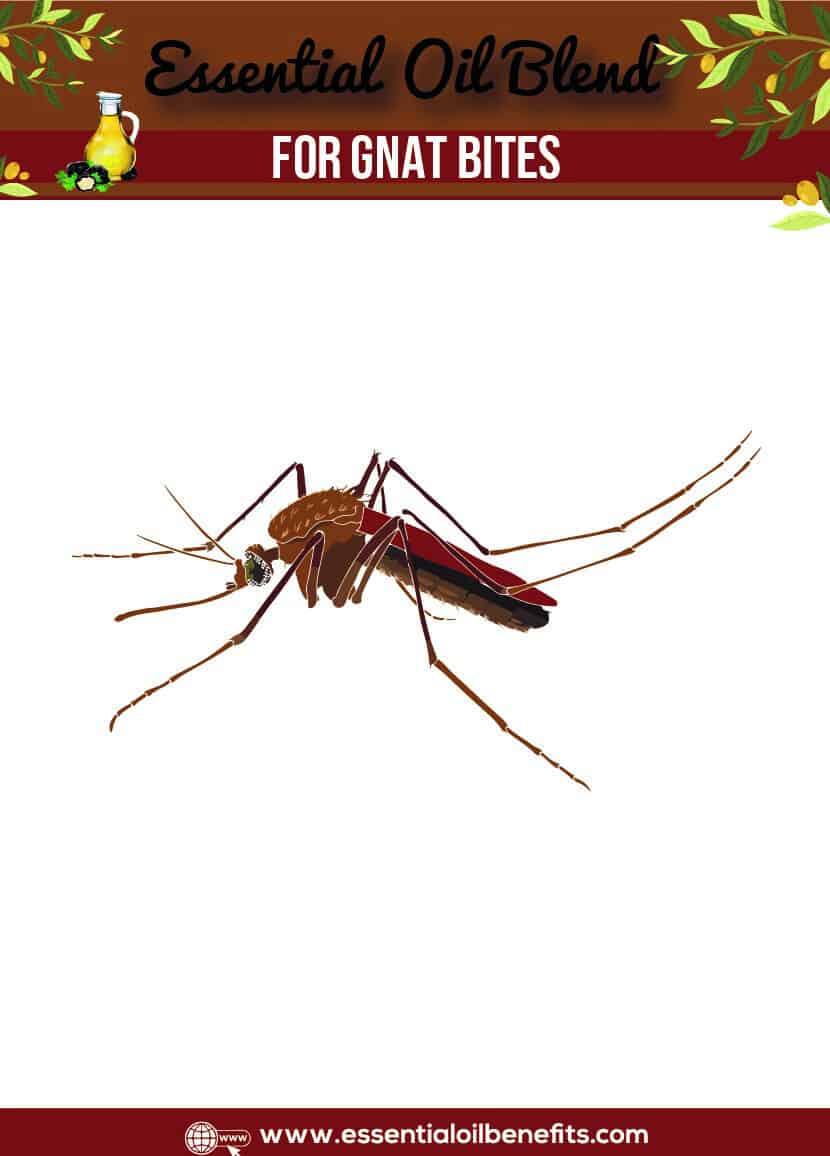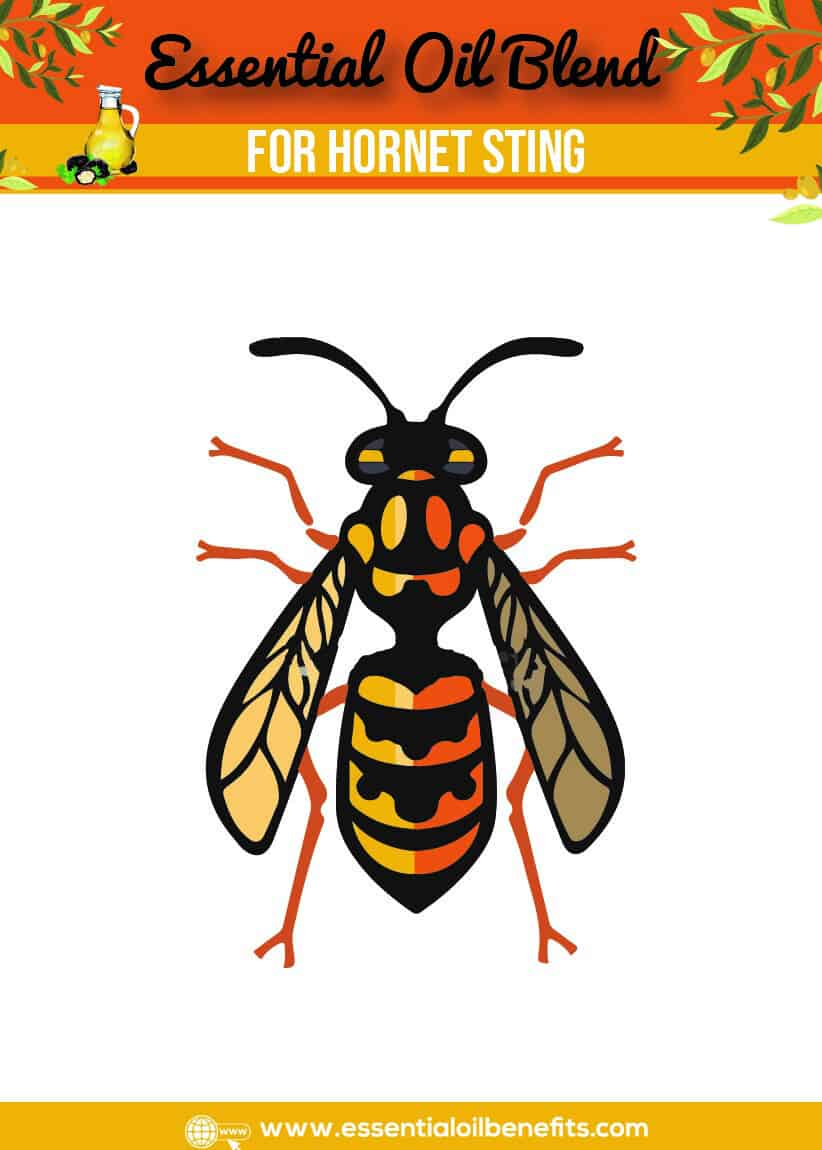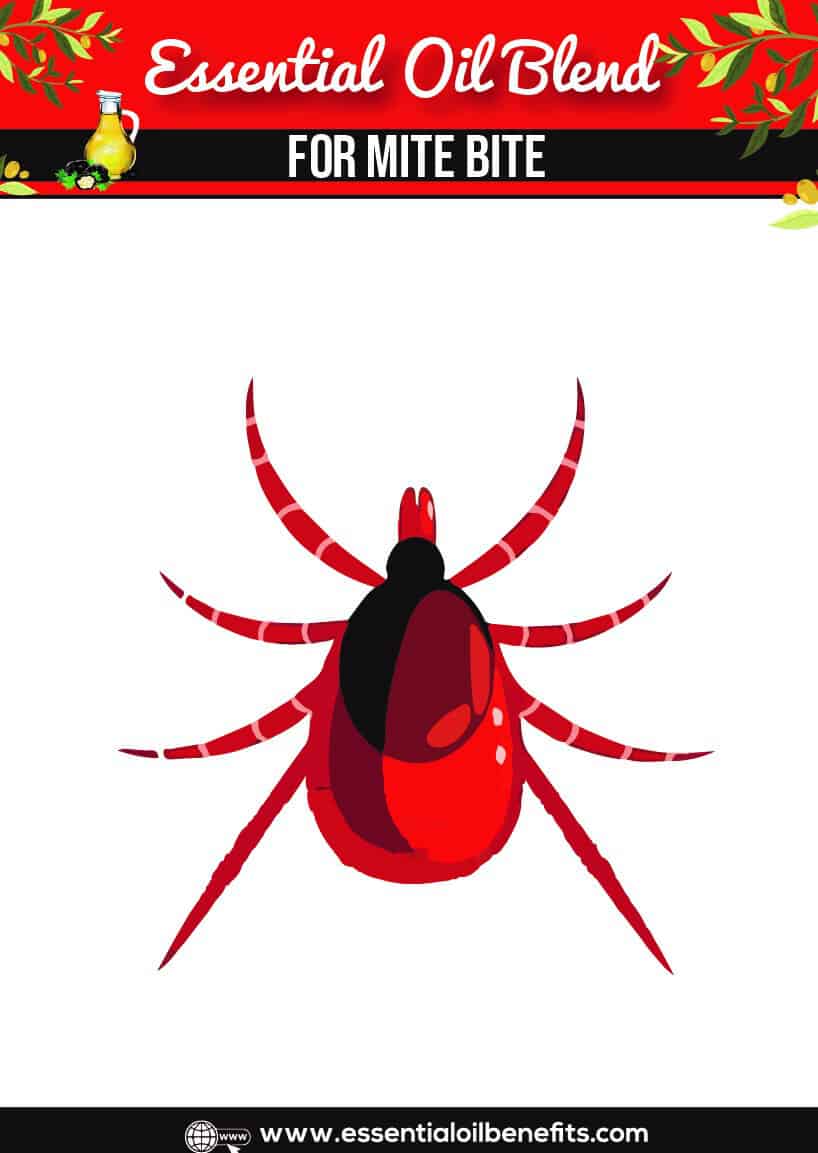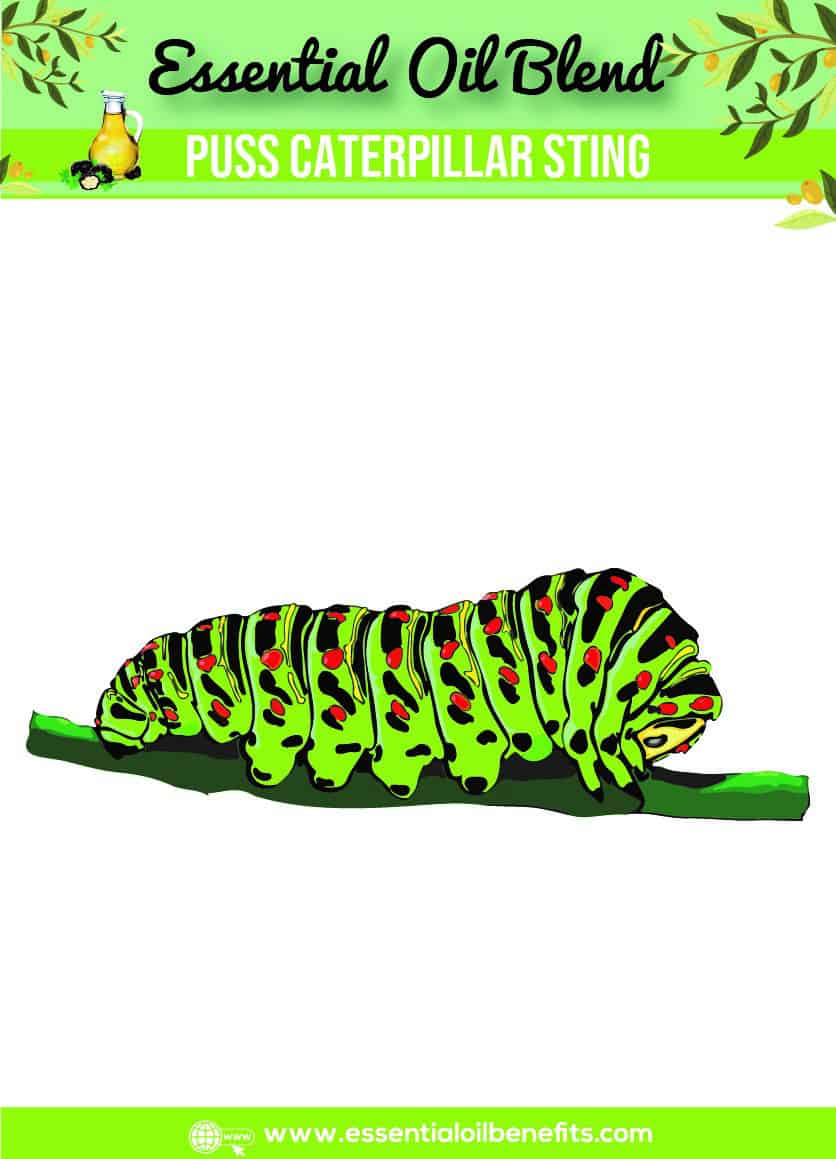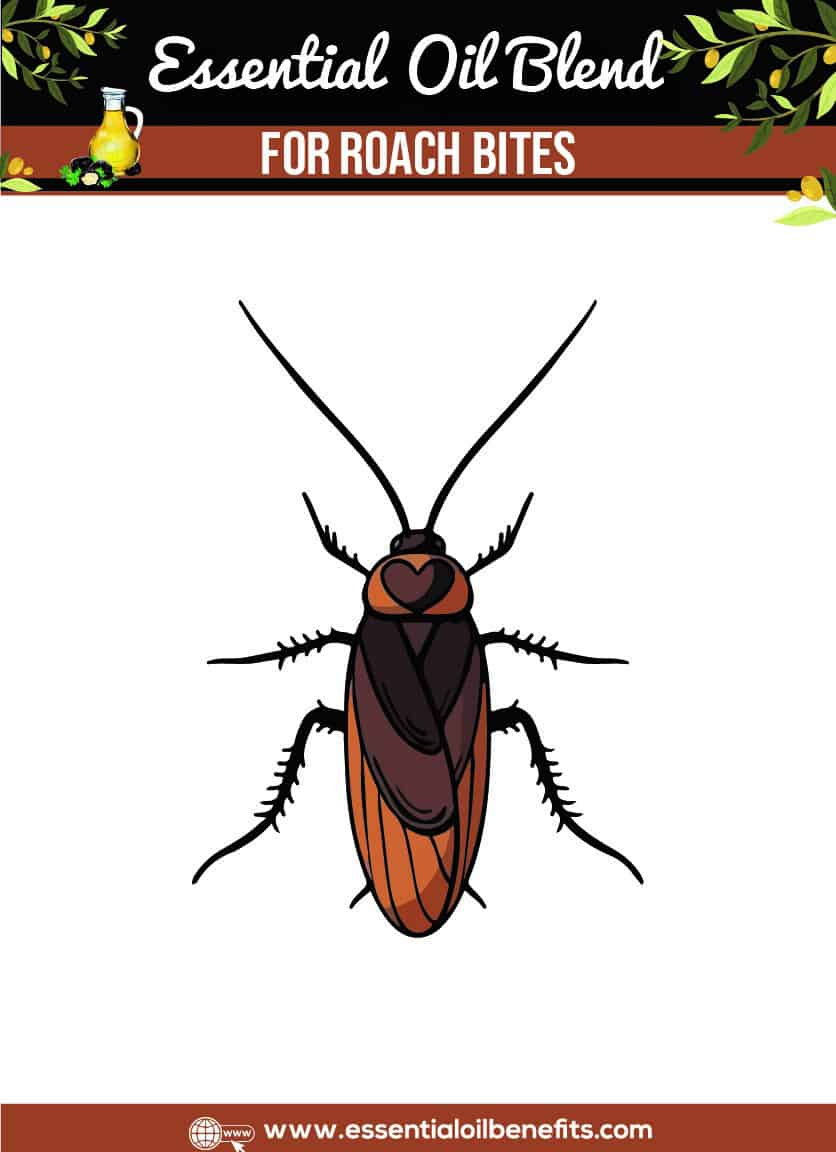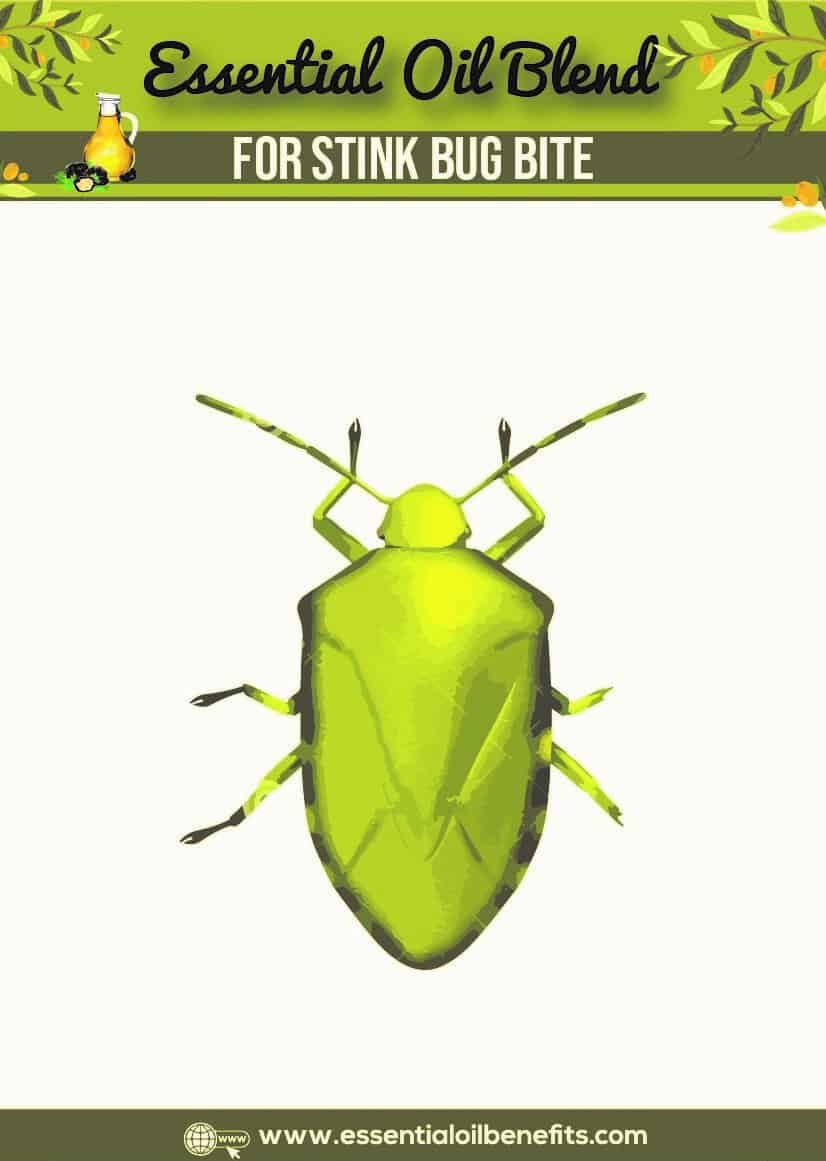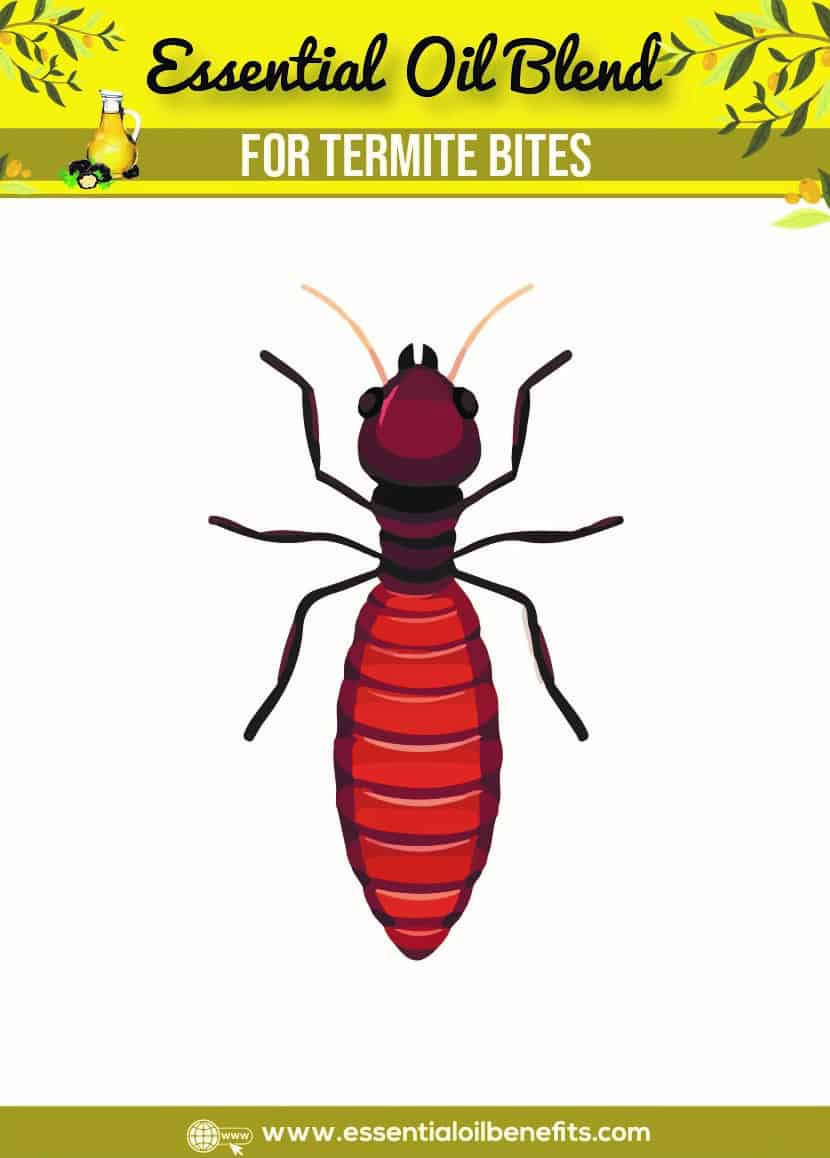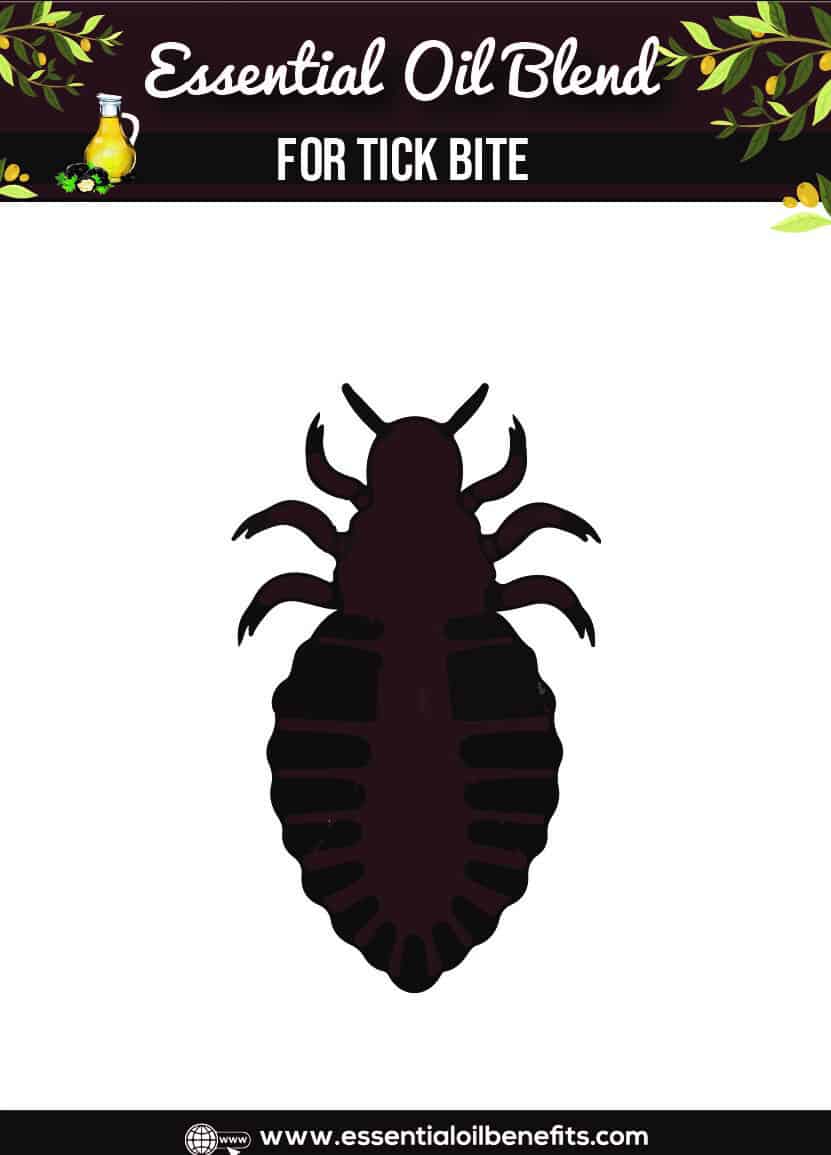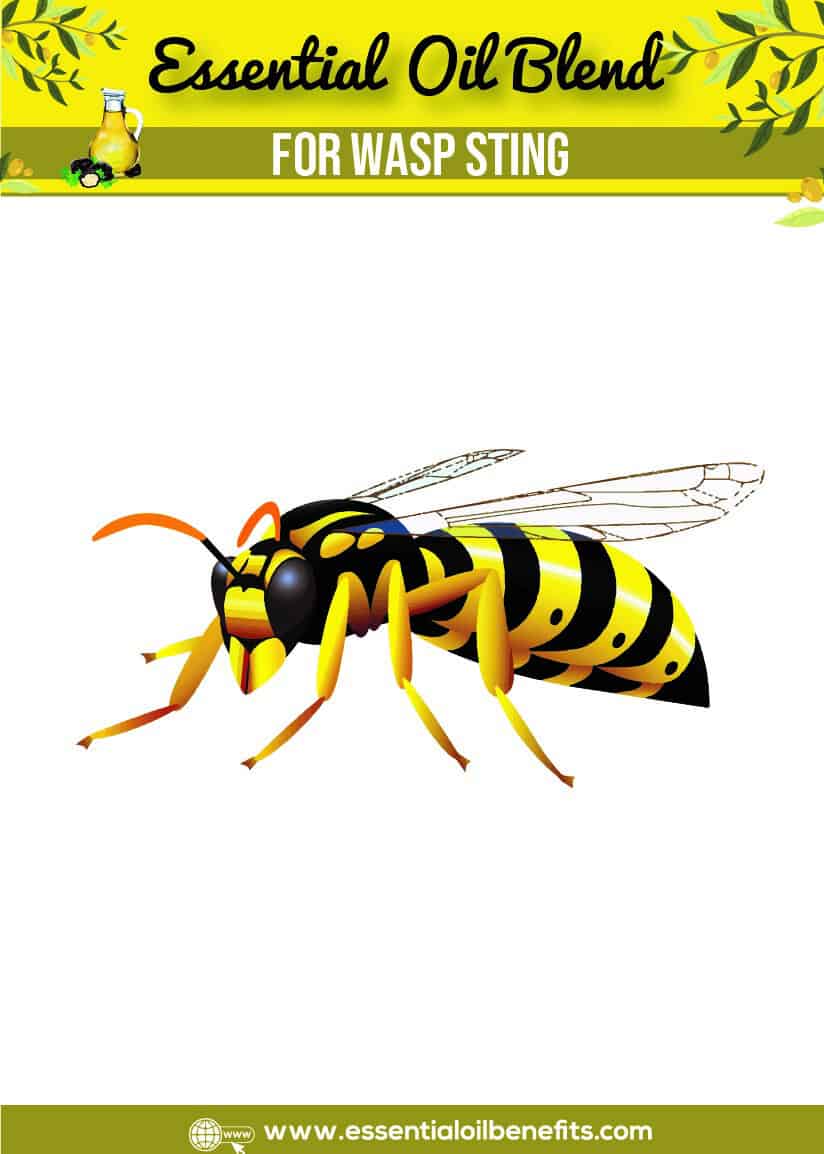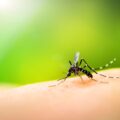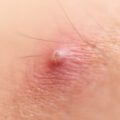Spring or summer, those warm days and cool nights sure do make the great outdoors mighty inviting. However, this is also when all sorts of bugs and insects come alive; hungry and eager to take a huge chunk out of any part of your exposed skin.
Whether you are deep in the mountains hiking a killer trail or just relaxing with your family in your backyard, there’s no escaping nature’s little vampires.
And as if ruining a good day in the sun wasn’t enough, some of these pesky insects and bugs carry some of the deadliest viruses and diseases known to man.
If you’ve been bitten or stung by a bug and are wondering whether you’ll make it, then please pardon me for rambling on. I mean, I’m just here yapping while an arachnid’s venom could be coursing through your veins and inching closer to your heart as we speak.
But don’t worry; besides a doctor’s office, this is the single best place you could be for any insect bite related hogwash. Why? Because you just landed on the ultimate, in-depth guide to everything you ever need to know about bug bites.
First Things First, What Are Bug Bites?
The world is full of millions of species of insects that will either bite or sting if they come near you. High chances are that you will definitely come across a couple of those in your life.
While some of the stings will be as a result of distress or being provoked such as with bees or wasps, others will literally be bites for food such as mosquitoes, ticks and fleas.
So to answer the questions, bug bites are lacerations or small puncture wounds on your skin made by biting and stinging insects. But how exactly do you know you’ve been bitten or stung?
Symptoms Of Bug Bites
Well, most people are immediately aware that they’ve been stung because they catch the perpetrator fleeing shortly after the crime. While you might be infuriated (and for good reason! dumb bugs), it’s in your best interest not to provoke the attacking insect.
Once you are bitten, the initial contact can be painful and depending on the bug; it will be followed by an allergic reaction.
Some insects are harmless, and people are not even aware that they’ve been stung until some symptoms appear. If you notice the following symptoms, then you may have been stung or bitten:
- Concentrated swelling on the affected area
- Redness or a rash developing with a bull’s eye on the bite
- Pain, itching or heat around the affected site
- Tingling sensation or numbness on affected area
However, these are just the mild symptoms. Some people could develop severe symptoms that require immediate medical treatment. These include:
- Rapid heartbeat with fever
- Difficulty breathing
- Nausea or vomiting
- Swelling around the throat, tongue, and lips
- Confusion, disorientation and/or loss of consciousness
If you or your friends notice any of these symptoms, contact emergency services instantly if there’s a severe reaction.
First aid instructions usually involve waiting for the medics, but it helps if you loosen any tight clothing and perform CPR on the victim if breathing stops.
But the important thing is you need to know what actually bit or stung you in the first place.
Types Of Bug Bites
Many insects bite and sting, but very few of them do so intentionally.
And although most of these bites are harmless and will only leave a small spot behind, the last thing you want to do is leave it to chance.
That’s why I’ve categorized all the different types of bug bites according to their culprits. Have a look at the wide range of bites and see which one best fits your description.
1) Tick Bites
Typically found in brush or plant cover, ticks attach to animals and people and bite them in an effort to draw blood. Tick bites are usually large and conspicuous.
While harmless, these bites and carry serious diseases such as Rocky Mountain or Lyme Disease. Ticks attach to warm, moist and hard to see areas such as the scalp, groin, armpits, skin folds and other hairy areas of your body.
2) Flea Bites
Fleas are not just a problem for pets anymore – they can make hosts of people too. The little buggers may be small and wingless, but they can jump for extremely long distances.
Flea bites leave small, itchy pimples with blood spots that will break open if scratched.
3) Fire Ant Bites
Known for one of the most painful bites from any insect, the Red Imported Fire Ant is mainly found in the Southern US. They are reddish brown, have a stinger at the rear and tend to build large mounds of dirt in sunny spots.
Their bite is incredibly painful and will cause an itchy, raised area on your skin followed by an even more painful pus-filled blister.
4) Scabies
These are small mites that burrow deep into the skin and cause their host intense itching and discomfort. They usually spread by close contact with an infected person or by sharing sheets, towels, clothes and other personal items with a person infected with scabies.
It may take weeks after scabies mites burrow into your skin before you experience any itching, rashes, blisters, and sores. The itching mostly occurs between fingers, elbows, armpits, waistline, buttocks and it gets worse during the night.
5) Bed bug Bites
Bed bugs are reddish brown insects that are less than a millimeter in size. They are mostly found in bedding, old furniture, and clutter around the house.
Most of the times, the reaction to a bedbug bite is mild; usually in the form of small, itchy red bumps on the arms and legs.
6) Bees, Wasps, Hornets And Yellow Jacket Stings
All the above insects carry some very painful stingers with a little venom to boot.
Typical reactions to these stings include pain, swelling, redness, and numbness of the affected site. However, multiple stings could cause severe and fatal reactions in people who are allergic to the insects.
7) Poisonous Black Widow Spider Bites
We’ve all heard how these small, shiny, globular spiders treat their men after mating. So it’s no surprise that it’s the female species alone that bites humans.
Most of these widows are found in Southern US, but they have managed to spread out through the entire US. A Black Widow’s bite is indicated by two small punctures followed by severe symptoms.
These symptoms usually start about 20 minutes to an hour after the bite and include pain, cramps, spasms, tremors, abdominal pain, and even a rise in blood pressure.
Fortunately for us, there are cures and remedies for all the different types of insects and bug bites out there.
Bug Bites Treatment And Cures
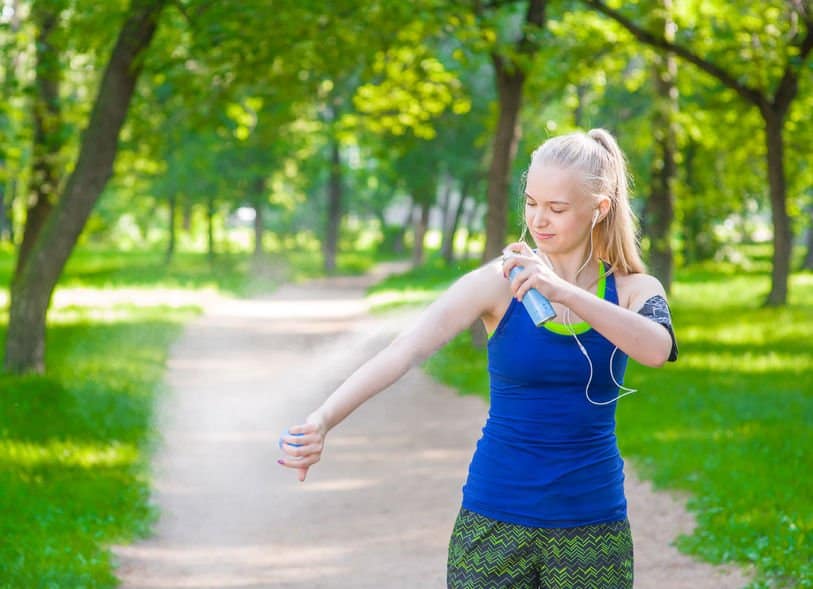
As bad as your bug bite might be, there is some light at the end of the tunnel. The majority of these bites are easy to treat right at home, especially if your reaction was mild.
Sometimes the treatment is as easy as applying an ice pack to the inflamed area to reduce pain and swelling. There are also some home remedies for harmless bug bites that we will look into later on.
However, other bites will require a trip to the pharmacists or even a doctor to combat the ill effects and possibly save your life. Let’s look at the wide range of bug bite cures available.
1) Soap and Water
The first treatment should always start by using soap and water to wash out the affected area. Generally, a bar of mild soap and warm water should help relieve a few symptoms of the bite.
If you are experiencing any itching, work the lather into your hands, spread it over the affected area and allow the soap lather to dry. Washing the affected bite with soap can help alleviate itchiness and prevent any risk of infection from the insect’s saliva or venom. We’ll get into some more home remedies later on.
Pros
- Cheap and convenient
- Relieves itchy bites
- Cleans out affected area and protects against infection
Cons
- Does not really do anything for allergies or venom
2) Ice Pack
There are very few ailments on this planet that can’t be solved by a good ice pack.
If you’re starting to swell up after an insect bite, it helps if you place a pack of frozen peas, steak, or just a cloth with ice on the swollen area. A few minutes of the ice treatment ought to bring down the swelling by reducing blood flow.
Pros
- Cheap
- Readily available
- Great for facial swelling
Cons
- May not be as effective as some of the other remedies on this list
3) Steroidal Anti-Itch Creams
Over the counter creams that have hydrocortisone or cortisone, such as Cortaid can really work wonders when it comes to reducing itching and inflammation. Fortunately, you can get a hydrocortisone cream from any pharmacy, chemist or drug store near you.
If your reaction to the bug bite was very severe, then it’s best to have a doctor prescribe a stronger corticosteroid cream for you. These creams can soothe inflammation and cool any itching skin as a result of insect bites and stings.
Pros
- Cooling effect on inflamed skin
- Prevents itching
- Easy to source
Cons
- Wrongful application could have dire consequences
- Could have side effects if used for longer than a few days
4) Antihistamines
Antihistamines such as diphenhydramine or benadryl can help control severe allergic reactions from bug bites such as swelling or rashes. But like all other drugs, you have to follow the instructions on the package to get the dose right.
In cases where the victim may not be able to swallow oral antihistamines, there are alternatives such as OTC antihistamine cream and others that come in hypodermic needles for emergency administering.
Pros
- Quick relief of allergic reactions
- Affordable and available in numerous forms
- Effective over an array of insect bites and stings
Cons
- Some antihistamines can cause drowsiness; so don’t operate machinery or drive after taking them
5) Ibuprofen
If you’ve ever been bitten by a black widow, yellow jacket or even poisonous snake, then you know that there are certain levels of pain that can’t be negotiated with.
If your insect bite is causing you severe pain and discomfort, some OTC, anti-inflammatory, analgesic medicines such as aspirin, naproxen and ibuprofen can really help offer relief for your pain.
Pros
- Effectively kills pain from bites and stings
- Also reduces hormones that trigger fever
- Available in chemists near you
Cons
- Might not be suitable for certain people and children
6) Essential Oils
Ah yes; Mother Nature’s very own be-all, end-all solution to pretty much every ailment. As vital as the name sounds, essential oils work magic for our bodies; both inside and out.
You may already know a few esensh oils (a typo, but that’s what the cool kids are calling them), from popular applications such as in diffusers and air purifiers.
But what you didn’t know is that essential oils such as lavender, tea tree and eucalyptus oils are ripe with properties that help alleviate itching, swelling, pain, and overall inflammation. In particular, tea tree oil has antibacterial properties that keeps infections from incessant scratching at bay.
Pros
- Instantly soothes inflamed and itchy skin
- Unmatched healing and anti-infection properties
- Zero possibility of overuse
- No side effects
- Pleasant smell
- Wide range of oils to choose from
Cons
- As always, severe allergic reactions to bug bites still require a visit to your doctor
7 Best Essential Oils For Bug Bites
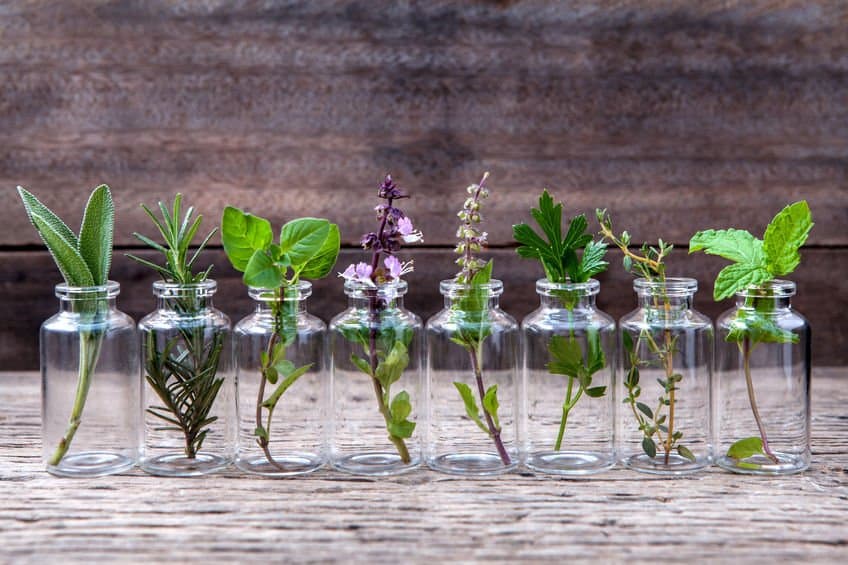
In this segment, I’ll start of by listing off some of the best essential oils for bug bites and then follow up with some great recipes and mixtures that you could make right at home.
But first, what are the top essential oils and what makes them worthy of treating insect bites?
1. Lavender
There’s a good reason why pretty much every essential oil collector on the planet has a bottle or two of this stuff. Hands up for those who have tried Bulgarian Lavender from the world’s best lavender plant?
Lavender oil is quite the powerful substance and is an anti-inflammatory, analgesic, antiviral, bactericide, calming, nerving, cicatrizing sedative. Hehe, what does this all mean?
In English, this basically means a lot of relief and help for stings and bites. Lavender does not really calm the skin itself, but rather works on the nerves in general to ease pain and inflammation.
2. Tea Tree
Tea tree oil is another staple that any collector worth their salt should always have at hand. This wonder-oil acts as an antibacterial, anti-fungal, antimicrobial, antiseptic, cicatrizant, immunostimulant, expectorant, fungicide stimulant, sudorific and insecticide.
Without all the fancy jargon, tea tree oil basically cleans out any puncture or scratch wounds effectively while helping alleviate stinging, itching, scratching and inflammation.
3. Chamomile
Widely known as one of the most highly effective remedies for bug and insect bites, chamomile oil has antiseptic, anti-inflammatory, analgesic, bactericidal, carminative, febrifuge, vulnerary and sedative compounds that can address the immediate pain and inflammation of the bite. This includes protecting you from incessant itching as well as any other topical infections.
4. Melissa
Also known as lemon balm, Melissa oil has a calming, relaxing and uplifting effect on the body.
This is all thanks to its antibacterial, antiviral, carminative, emmenagogue, nervine, sedative, tonic and antispasmodic. properties that make it quite the effective treatment for scrapes, cuts, stings and bites.
5. Eucalyptus
Boasting of antiseptic, anti-inflammatory, antiviral antispasmodic, cicatrizant, diuretic, insecticide, and detoxifying abilities, eucalyptus oil is without question one of the best essential oils on earth for bugs and insect bites.
Eucalyptus essential oil contains outstanding qualities that protect the affected area from becoming infected.
6. Basil
Did you know that it’s the incessant itching of a bug bite that makes it so difficult for them to heal? Even while deep asleep, this inflammation can cause you to keep on scratching.
Applying basil essential oil reduces the urge to scratch; making it one heck of a helpful night time remedy. Basil also has anti-inflammatory properties that soothe hotspots and relax irritated skin.
7. Thyme
Thyme essential oil actively assist in keeping bite wounds, cuts, sores and lesions super clean and infection free. By killing off any harmful bacteria, thyme oil ensure that there’s no chance of developing an infection.
The active ingredient in this highly popular oil is thymol; which is able to defend against pathogens and other infections, while at the same time stimulating healing activities after damage from bug bites. Did you know that thyme oil is one of the best oils for sinus infections.
Natural Recommended Product For Bug Bites
The L’orpur Problem Skin Relief Natural Cream is designed to treat and prevent recurrence of difficult skin conditions including itching, skin rashes, bug bites, etc.
With its unmatched anti-bacterial and healing properties, it provides instant and long-lasting relief for swelling, inflammation, rashes, redness, itchiness, and flare-ups. Why not give it a go!
24 Essential Oils Recipes For Different Bug Bites
If you have some the above essential oils at home and have been bitten or stung by an insect, it really helps if you can identify the insect for more accurate treatment. I’ve compiled a list of popular recipes catered for specific types of bug bites and to make it easy, it is presented in alphabetical order. Shall we begin?
1. Bed bug bite
They are tiny, but they have a voracious appetite for blood, and they will bite you multiple times as you sit or sleep in an infested area. Plus, they follow you back home from any home or hotel that has them. The bites are incredibly itchy and will leave you covered in red dots and hives. Here is blend to both prevent and treat bed bug bites.
- 2 drops each tea tree and thyme
- 4 drops each rosemary and sweet basil
- 3 drops citronella and calendula
- 2 drops lemon
- 20 ml carrier oil
Method
Mix the oils and apply lightly before bed to prevent bed bug bites or on the itchy, red spot after the bug bite.
2. Bee sting
Did you know that bee stings kill more Americans each year than snake bites? I kid you not folks; that is just how dangerous those flying menaces are.
If it helps any, they don’t last for too long after launching an attack on you. Call it poetic justice if you will, but a honey bee will leave its stinger and innards behind once it stings. So, it conks soon after, but it leaves you with a barbed stinger stuck in your skin.
Hence, the first order of the day, after you have been stung by a bee, is to remove the stinger.
Remember that along with its innards, the bee will also leave its venom pouch behind. Of all the insects that sting, bees send in the most amount of venom into your system, about 50 milligrams of it. And that venom sac has more of it.
So, if you have some toothpaste handy, the gel kind that has extra cooling, add a few drops of water to it and apply as you would a shaving cream on the sting. Then use a blunt, flat object, like a credit card or an old razor with a blade that has lost its sharpness to shave the stinger out of the skin.
Another way is to put a few drops of molten wax on the sting area. Once the wax hardens. Yank it out in one piece. Whether you are shaving or using wax, remember to look at the direction of the sting, you will need to pull it out from the same direction as it went in. Then, use this blend of essential oils on the area.
- 6 drops peppermint
- 3 drops wintergreen
- 5 drops each lavender and copaiba
- 3 drops turmeric
- 5 tbsp of royal jelly or 30 ml carrier oil
Method
Mix the essential oils with the carrier oil or royal jelly and store in a dark glass container. Apply as you would any antiseptic cream. Unless you are allergic to bee venom, this blend will quickly tackle the swelling, pain and other signs of inflammation.
3. Chigger bites
For something so tiny, these mites sure do cause a lot of discomfort. In fact, chiggers are so tiny that you need a magnifying glass to spot them. Plus, it’s not adult chiggers that clamp on to your skin but the larvae that attach themselves to your flesh, to feed off a smoothie made from your decomposing skin cells.
You may not see them but you sure will see the uncontrollably itchy, red trail that they leave in their wake. Chigger bites cause tiny, blister-like bumps, and these often appear on thin-skinned areas of the body like the ankles, the groin, behind the knees and other areas.
The larvae don’t carry disease causing germs but all that scratching can break the skin and lead to a secondary infection. So, here is a blend that will stop the itching from getting out of hands. You will need the essential oils of:
- 3 drops peppermint
- 2 drops each calendula and frankincense
- 1 tbsp aloe gel or 10ml castor oil (carrier oil)
Method
Mix the oils or the gel and the oils together and store in a small dark glass container. Apply as you would any soothing ointment or salve on the red, scratchy welts caused by chigger bites. Use 2-3 times a day till the symptoms subside.
4. Fire ant bite
No itching there, just burning pain that is felt the minute the tiny critters latch on to your skin. By the time they let go, you will have a raised, red bump that will be both painful and itchy. Just how painful and itchy will depend on how habituated you are to dealing with these tiny devils.
If you are a southerner, the yelp of a northerner bitten by a fire ant may leave you amused and surprised. But, regardless of where you are from, you will feel the itchy pain thanks to the cocktail of 46 proteins in their venom.
Too many bites from these lil suckers and some people might start hallucinating. Fire ant bites can cause pimple-like pus-filled bumps and you don’t want to let things go so far. So, here is a blend that will help you to deal with fire ant bites and the problems they cause. You will need the essential oils of:
- 2 drops eucalyptus
- 4 drops peppermint
- 3 drops lavender and sandalwood
- 20 ml carrier oil
Method
Mix the oils and store in a dark glass bottle. To use, rub a drop on the raised red spot that indicates an ant bite. Use it 1-2 times a day and you won’t have to worry much about the bite-zits.
5. Flea bite
And you thought only your pets have to deal with fleas! Well folks, these opportunistic parasites make no distinction between hosts. For them the blood of one species is as good as that of another. So, if the fur on your pets is hosting fleas, you can be sure many of them have made their way to your carpet, bedding and upholstery.
The bite itself will cause little more than itching and redness, but fleas are often carriers of disease causing organisms. So, you have to be careful. If you feel you may have an infestation in your home, get rid of these pests promptly. For a flea bite, use this blend of essential oils:
- 3 drops thyme and peppermint
- 2 drops clove
- 4 drops spike lavender
- 20 ml carrier oil
Method
Mix the oils together and store in a dark bottle made of glass. Use on the bite till the redness and itching subside.
6. Fly bite (deer, fruit, horse)
Unlike the housefly, deer, horse and fruit flies have sharp structures in their mouth meant to lacerate the skin, so that they can lap up the blood that flows out of the tiny cuts. It goes without saying that the method of drawing blood does cause the victim some amount of pain.
But, that is not where the menace ends! These insects are also carriers of diseases, which get transferred into your body through their bite. So, keep your environment clean to avoid hosting these dangerous insects. If you are outdoors and do end up with a fly bite, here is a blend of essential oils that will help.
- 2 drops each rosemary, thyme, holy basil, clove and cinnamon bark
- 4 drops turmeric
- 5 drops each lavender and palma rosa
- 30 ml carrier oil
Method
Mix the oils and store in a dark glass bottle/jar. Use as you would any antiseptic ointment after washing the bite area with soap and water.
7. Gnat bites
They are close relatives of mosquitoes, so of course they bite and they do feed on your blood. However, unlike mosquitoes, they don’t break your skin. They simply slice right through it and inject an anticoagulant into the cuts that allows them to keep feeding without worrying about clots.
In fact, the average gnat will drink up more of your blood than a mosquito, which makes a gnat bite more itchy and painful. Unfortunately, scratching the bite area can lead to lesions and greatly increase the risk of an infection. Instead, use this essential oil blend:
- 2 drops clove and eucalyptus
- 5 drops peppermint
- 4 drops each lavender and German chamomile
- 20 ml carrier oil
Method
Blend the oils together and store in a dark glass bottle that has a roller ball head. Apply on the bite mark and massage with firm downward pressure and light pinches till the itching subsides.
8. Hornet sting
Yes, they are from the same genus as the notorious wasps and they sting just like bees and yellow jackets. But, these nasty sods are the worst of the lot. For starters, their sting hurts the most and like their other striped brethren from the Vespa genus, they can sting multiple times without getting themselves killed.
They only manage to get in a tiny amount of venom into your body; think 2-15 milligrams, which is far less than what a honey bee throws your way. But, a hornet’s venom is designed to torture. It has enzymes that break down the cell membranes and activates the neurons so that you feel maximum pain. And if that is no enough, the toxin also triggers the release of histamines to cause swelling and hives, so that the pain continues long after the sting.
Thank heavens that hornets are tiny punks, can you imagine the damage that a cat-sized hornet could do? While you shudder at that thought, let me tell you about a quick recipe that will beat down the venom before it causes major discomfort. You will need the essential oils below:
- 3 drops rosemary
- 2 drops ylang ylang and lemon
- 3 drops wintergreen
- 4 drops each German chamomile and sandalwood
- 3 drops copaiba
- 5 drops peppermint
- 30 ml carrier oil (any light carrier oil)
Method
Mix the oils and store in a dark glass bottle. A bottle with a roller ball head is quite convenient. Wash the sting with water and pat dry and quickly apply the blend on and around the red spot/hive. Reapply every 3-4 hours for the first 12 hours and then apply 2-3 times a day as needed. Normally, one day of consistent application is enough to tone down the effect of the venom and your own immune system.
9. Jellyfish sting
These gelatinous monsters let their tentacles, which are armed with stingers, callously float behind their body. So, anybody who enjoys time by the seaside in summers has a high risk of being caught unaware by a jellyfish sting. Whatever you do, don’t get somebody to pee on the sting.
The last thing you need is an infection to go with the venom; not to mention, that the salts and other compounds in urine will only make the pain worse. Here is a simple yet effective blend that will take away the pain and stop the inflammation in its tracks. This is what you need:
- 20 ml concentrated vinegar (10% acetic acid)
- 2 drops each eucalyptus and German chamomile essential oils
- 1 drop each clove and rosemary essential oils
Method
Mix the liquids as above and store in a dark glass bottle. To use, shake the bottle well and douse the sting with the vinegar. Give the liquid 2-5 minutes to start acting, dousing again if needed to keep the sting site covered in the liquid. Use a pair of tweezers to gently lift the tentacles/stinger out and off your skin.
Don’t try to scrub or shave the stinger off. That does not work and will only aggravate the pain. Once the stinger has been removed. Apply some more vinegar blend to the area and allow it to dry on the skin. The vinegar in the mix will help to neutralize the venom while the essential oils will exert an analgesic and anti-inflammatory effect.
10. Kissing bugs bite
They won’t come near you when you are awake but will bite when you are sleeping. And guess where they bite?
If their name is any indication, the bite is always on the face and near the eyes or the mouth. The bite itself does not cause too much discomfort, besides some redness and swelling.
But, these bugs are carriers of the dangerous Chagas Disease, a parasitic infection. Plus, some species of kissing bugs are notorious for their very painful bites.
If you live in an area infested with these critters use a spray made from citronella and lemon essential oils (10 drops each in 200 ml hot water) to ward off these pests. If you do suffer a bite, use this blend:
- 4 drops each turmeric, thyme, rosemary
- 2 drops each clove and cinnamon bark
- 5 drops each palma rosa and frankincense
- 8 drops peppermint
- 45 ml carrier oil
Method
Mix the essential oils with the carrier oil and store in a dark glass bottle. Wash the bite area with soap and water and pat your skin dry. Apply the blend with a Q-tip or your fingers on the bite and the surrounding areas.
11. Midge bites
These insects are tiny and have the propensity to bite. The worst part is that you will only feel the pain when they bite because these little critters are hard to spot given their tiny size, hence the nickname “no-see-ums”.
The sting from a midge will cause mild to medium burning and pain. You will also end up with tiny, red, itchy bumps, blisters or even a welt. Here is a blend that will help to relieve the symptoms:
- 4 drops each lavender and palma rosa
- 3 drops Frankincense
- 7 drops peppermint
- 4 drops bergamot
- 30 ml carrier oil
Method
Blend the oils in a small glass bowl and remove into a dark glass bottle. Use after washing the bite area with soap and water.
12. Mite bites
The good thing about these insect-like, tiny pests is that they don’t crawl into your home on their own. The bad news is that they let themselves in with their hosts, which are often welcomed into homes as pets. Yes, you read that right, from tea cup pigs to cats, dogs, rodents and even rabbits and birds can bring mites along.
And when you handle your furry friends, their parasitic mites will be only too happy to take a bite out of you. Although there is no venom involved, mite bites will cause irritation, can trigger an allergic response and are generally quite annoying since they can cause itching, rash and redness. Plus, there is the risk infections.
So, this is what you need to deal with mite bites:
- 20 ml carrier oil
- 10 ml lemongrass
- 3 drops each of cinnamon and clove
- 4 drops peppermint and basil
- 2 drops turmeric and tea tree
Method
Mix all the oils together and pour the blend into a small, dark colored glass bottle. Wash the itchy red spot with soap and water and then massage a drop of the blend on the red spot/hive till the itching subsides, which should happen in 2-3 minutes.
13. Puss caterpillar sting
They have been nicknamed the toxic toupee for their fuzzy, cute appearance and the pain that their stings cause. The name, puss caterpillar, has been earned courtesy of their look, which is quite close to that of an inch-sized, sitting, furry feline.
In fact, most kids end up with puss caterpillar stings because they simply can’t resist touching the furry little things. These moth larvae can usually be found on oak and citrus trees and even if you don’t try to pet one, you may still end up with a sting if one has to fall on you.
Having said that, the puss caterpillar is the most dangerous caterpillar in the United States, with a sting from this tiny thing causing pain that is worse than that of a bee sting. To add to the problem, their venom is poorly understood. However, what’s known is that the pain is immediate, radiating and intense.
The venom is injected into the body with tiny, detachable spines that are hidden in between the soft fur. As soon as the caterpillar comes in contact with your skin, these spines pierce your skin and the venom is released. The burning pain increases in intensity with time, unless treated. You don’t have to necessarily seek medical attention for a puss caterpillar sting.
However, if you suffer from asthma, hay fever and other allergies, it would be safe to see a doctor at once. Having said that, the first order of the day, after your encounter with a puss caterpillar, should be to remove the spines stuck in your skin.
Removing the spines: Use a sticky tape (medical sticky tape preferred) and yank out the spines stuck in the skin. Another way is to make a poultice of raw potatoes and ginger root with a pinch of turmeric added to it.
Grind the ingredients together and place on the sting. Tie a gauze tape around it to keep the poultice in place. The pain will start to subside within an hour as the botanicals draw out the toxins.
Dealing with the toxins: If you have nothing else around, use a paste of baking soda, water and a drop each of peppermint and frankincense essential oils. Apply in a thick layer on the sting and keep in place till it dries.
Once the spines have been removed and the toxins neutralized, use this blend to deal with the remaining pain and swelling.
- 5 drops each of German chamomile, sandalwood, helichrysum and palma rosa
- 3 drops each copaiba and holy basil
- 2 drops each lemon and clove
- 1 drop nutmeg
- 10 drops peppermint
- 5 drops eucalyptus
- 60 ml carrier oil (calendula infused or coconut)
Method
Mix the oils and store in a dark glass bottle, and apply after the two step process explained above. Use 3-4 times a day till the pain and swelling subsides and then twice a day till the grid like papules persist.
14. Roach bites
If you have suffered from a roach bite at home, chances are that you are dealing with a very serious infestation. Roaches are omnivorous and will feed on anything that is available around them, including human flesh, in case of food paucity.
Because they actually gnaw on the skin and the nails of the toes and the fingers and can even resort to biting off tiny bits of flesh from the eyelids, their bites cause redness, pain and swelling.
Plus, there is always the risk of infection to worry about. It goes without saying that you need to get rid of the infestation because as the roach population swells, the bites will keep coming. For the bite itself, here is an essential oil blend that will help to bring down the pain, swelling and itching.
- 5 drops each cypress and lavender
- 3 drops each peppermint and eucalyptus
- 2 drops each tea tree and lemon
- 30 ml carrier oil
Method
Mix the oils and store in a glass bottle. Wash the bite area with soap and water and then apply the blend on dry skin. Don’t use it on the area around the eyes.
If you suspect that a swollen eyelid is a result of a roach bite, use a chilled (used tea bag) on the swollen area. If you have an infusion tea bag of chamomile and green tea, it will work faster. Place the tea bag on the eye lid for 10 min and then apply calendula infused oil (not essential oil) on the area.
15. Scabies
The microscopic burrowing mites dig holes in the outer layers of the skin and lay their eggs in there causing the appearance of tiny fluid filled blisters that look like prickly heat but are intensely itchy.
Although these mites don’t get transmitted sexually, the infestation is highly contagious and will spread through contact and use of contaminated clothing, toys and other things that a host has used. Here is a blend that will help to tackle the itching and kill the critters that cause it. You will need the following essential oils:
- 3 drops each clove and palma rosa
- 2 drops tea camphor/spike lavender
- 4 drops geranium
- 20 ml carrier oil
Method
Mix the oils and store in a dark glass bottle. Apply generously on all affected areas and let it stay on your skin for at least 2-3 hours. Most critters will die within one hour of application. But, continue using twice a day for 4-5 days to get rid of all the mites and their larvae.
16. Scorpion sting
If you thought spiders were the only scary arachnids, you may have never come across their bigger and nastier cousins – The scorpions. Here is another fact that should give you the creeps. There are nearly 2000 varieties of those evil suckers out there and each one packs in an evil sting but only about 20-40% have venom that can be life threatening.
In fact, only about 10% of all scorpion stings require a trip to the ER. Of course, the reaction can be more severe if the victim is a child or a senior. Having said that, it is going to hurt like the mother of all pains. It’s pricking cold and singing heat all at once and it takes hours and sometimes even days to subside.
Although the devils can only inject a minute quantity of their venom, it is a powerful neurotoxin that will cause the pain to come from the inside. So, if you live near or in dry, arid or desert areas, it would be safe to have this blend on hand. You will need the following essential oils:
- 10 drops each Frankincense and German chamomile
- 4 drops Clove
- 2 drops Eucalyptus and cinnamon bark
- 3 drops Lemongrass
- 2 drops each Lavandin and tea tree
- 3 drop Rosemary
- 4 drops Copaiba
Method
Mix the essential oils and store in a dark glass bottle. Scorpion stings are usually suffered on the hands or feet. So, start by washing the sting site with an antiseptic soap and water and then soak it in a mixture of warm water (not hot), Epsom salt (2 tbsp) and 2 drops of the blend above.
Give the mixture about 10-15 minutes act on the venom. Then, pat the soaked area dry and apply this blend, diluted to 2 drops in ½ tsp coconut oil, directly on the sting. Also, put some of the diluted blend on a small cotton pad/piece of cotton wool and place it on the sting site. Wrap some gauze loosely around the cotton pad to hold it in place.
The thing about scorpion stings is that the pain tends to travel upwards and towards the heart. So, if you have been stung on the foot or the hand, expect your calf/arm muscles to get heavy and sore within a matter of minutes.
Dilute 3 drops of this blend in a tablespoon of any carrier oil and massage the major muscle group just above the sting area with the mixture. Remember to only use downward strokes that work away from the heart and not towards it.
17. Sea urchin sting
You are likely to get a taste of the barbed nature of these spikey creatures when you inadvertently step on one while strolling on the beach or when you try to handle one in order to marvel at its unique form. Now, here is the problem with these spiny creatures – they can both bite and sting.
Wonder how? Well, the barb creates puncture wounds and some sea urchins have tiny jaw-like structures in between these barbs. They are called pedicellaria and they latch on to the skin with a biting action. Depending on just how deep the spine has penetrated, you may be dealing with both a bite and a sting.
The good news is that the spikey creatures are not generally equipped with dangerous venom. However, a sting and or bite will cause irritation, an allergic reaction, and if not treated promptly, an infection too. So, if you are headed to the beach, here is a blend and a few more things to take along. You will need the essential oils below:
- 5 drops each eucalyptus and tea tree
- 2 drops rosemary
- 4 drops German chamomile
- 10 ml carrier oil (coconut preferred)
Method
There is no science to making this blend. All you have to do is dunk all the oils in a small, dark colored glass bottle, preferably one with a roller ball head, put the cap back on the bottle mouth and roll the bottle in between your palms to mix the oils.
If you do get stung, the first order of the day is to see if a piece of the spine has been left behind in the skin, which is a very good possibility. Now, the problem with sea urchin spines is that they are a brittle lot, so trying to extract one may cause it to break midway, leaving a piece embedded in the skin. And, that will cause a lot of trouble!
So, always have a pair of tweezers and some hot water on hand. You will need to soak the sting site till your skin prunes. Once your skin is soft, it will be easier to pull out the spine. But, make sure you do the extraction very slowly and gently and with the steadiest of hands.
If you don’t see a black dot left behind, you have successfully taken care of the spine. If you do see the black dot, fret not. Apply a drop of the blend directly on the sting site and then wait till you get back home. Soak the sting site in a mixture of hot water (as hot as you can tolerate), a cup of vinegar and ½ tsp of the blend.
The acids in vinegar are known to dissolve the urchin spines. If you don’t want to wait till you get back home, carry some acetic acid along. This is available in the form of crystals. Add about a teaspoon of the crystals to hot water and soak the sting area in it. Whether you are using vinegar or acetic acid, you may need to repeat the treatment 3-4 times before you get complete success.
The pedicellaria will usually be on the surface of the skin like a tick. But, these too will break and can remain embedded in the skin. So, don’t try to pull them out with tweezers. Instead, mix ½ teaspoon of the blend with ¼ tsp baking soda and apply on the sting site as you would a shaving cream.
Then, use a razor or the edge of a credit card to shave the pedicellaria off your skin. Don’t forget to treat the sting site with the blend at least 3-4 times a day till the inflammation, redness and pain persist and thereafter twice a day for 3-4 days till complete healing occurs.
18. Snake bite
If you have suffered a snake bite, whether it was a venomous snake or not, seek medical attention immediately.
In the meanwhile, it won’t be long before the neurotoxins in the venom start causing serious pain. The pain and the shock of the bite will send your blood pressure soaring, moving the venom through your system faster.
So, the first thing you need to do is calm down. Always keep a blend of lavender, bergamot and sandalwood at home. Even if you don’t have any snakes around, this blend will help to ward of the stress.
In case of a snake bite, sniff it right out of the bottle or pour a few drops on a handkerchief/tissue. For the pain and inflammation, make this blend beforehand and keep it handy because it works on all types of pain:
- 10 drops peppermint
- 5 drops each sandalwood and turmeric
- 3 drops each rosemary and tea tree
- 2 drops clove
- 1 drop nutmeg
- 45 ml carrier oil
Method
Mix the oils and store in a dark glass bottle. Pour water on the snake bite wounds (two or more puncture wounds). Then, apply this blend with a Q-tip or cotton wool (not with your fingers).
You can also use this blend to massage the major muscle groups around the bite area while you get yourself to the ER. But remember to massage away from the heart.
19. Spider bite
Well, most spider bites are not harmful, unless you are dealing with a brown recluse or a black widow. Bites from these arachnids causes intense pain within hours. But, even when a spider bite comes from other members of the family, it does cause a raised, red bump with significant itching, inflammation and some amount of pain.
The big problem with a spider bite is the real risk of a bacterial infection, as these critters often play host to bacterial infections, which get transmitted to you through the bite.
The good thing is that essential oils can be used to deal with the risk of infections as well as the discomfort caused by spider bites. This is what you will need for the blend:
- 3 drops each of rosemary and tea tree
- 2 drops each lemon and cinnamon bark
- 4 drops each of peppermint and eucalyptus
- 1 drop clove
- 5 drops lavender
- 1 cup aloe vera gel or 30 ml carrier oil
Method
Mix the essential oils either with aloe gel or with a carrier oil. If using aloe gel, store the mixture under refrigeration. It can be used for any type of insect bite, but you will have to use it within 2 weeks of preparation if using homemade aloe gel.
This is the one time that I recommend the use of the store bought, green, gooey stuff because it comes with preservatives, which will make the blend last for up to a year. Another way is to blend the essential oils with a carrier.
If using a carrier oil, store the blend in a dark glass bottle, away from direct heat and sunlight. Apply as you would any antiseptic ointment/salve on the sting bite and on the skin around it.
Use 3-4 times a day for at least 2-3 days. Thereafter, use once a day for 2 days even after the inflammation has died down and the pain is completely gone.
20. Stink bug bite
Stink bug bites are extremely rare because these shield-shaped insects are herbivorous and prefer to use their sharp mouth parts to cut through the skin of fruits and vegetables, and not mammals.
You would actually have to handle one in a very threatening way for it to bite in self-defense. If you are ever bitten by one of these strange looking bugs, here is a blend that will help.
- 3 drops each rosemary and lemongrass
- 5 drops peppermint
- 15 ml carrier oil
Method
Mix the oils together and apply as you would any anti-inflammatory ointment.
21. Termite bite
These tiny insects limit themselves to chomping on wood but if handled, they will bite. Fortunately, since their cutters are very small, they cannot inflict much damage.
At worst, unless you are allergic to termite bites, you are likely to end up with tiny red dots that cause mild to moderate itching and swelling. Here is a blend that will help you to handle those:
- 1 tbsp aloe vera gel
- 2 drops peppermint and frankincense
- 1 drop tea tree
Method
Mix the ingredients and store in a dark glass container under refrigeration. Use on the bite after washing the area with soap and water.
22. Tick bite
Tick bites are very common in summer, so much so that most GPs see as many as 5 -10 tick bite victims every day during this period. Although ticks are a common sight on man’s best friend, you can end up with a tick bite even if you don’t have a pet. These yucky critters live in grass, piles of leaves and on trees.
The bite of a tick is seldom more irritating than a mosquito bite except that you may have a bull’s eye sore, which is itchy and may even develop a rash. So, it’s not so much the actual tick bite but the infection that the critter’s saliva can cause, which should worry you.
Lyme disease as well as Rocky Mountain spotted fever are both caused by tick bite. The germs that cause them can come from the saliva of the American dog tick and the brown tick, while Lyme can be given to you by the blacklegged deer tick.
The only good thing is that ticks don’t bite and go away. These blood sucking parasites stay back feeding on your blood till they are physically removed. So, if you find a new black mole on your skin or a crab like creature hanging on to your flesh, this is what you need to do:
Dip a Q-tip in eucalyptus or rosemary oil and put the swab on the tick’s body, close to your skin, and it will immediately let go off your flesh. Another way is to use tweezers to pull out the tick. Grab the critter as close to its head as you can. You don’t want to leave the tick’s mouth on your skin. Then, apply this blend of essential oils:
- 2 drops each of rosemary and thyme
- 4 drops turmeric
- 3 drops each of cinnamon bark and peppermint
- 3 drops holy basil
- 30 ml carrier oil (coconut oil)
Method
Mix the oils and store the blend in an amber glass bottle. Wash the tick bite area with soap and water. Pat dry your skin and then apply the blend directly on the tick bite and the area around. It would be safe to get a blood test done in case of a tick bite.
23. Wasp sting
Like the Yellow Jackets, these lil fellows are highly aggressive, perhaps because they are close relatives. Their stingers are very sharp, and they can sting multiple times. Plus, they can call their friends to gang up on you. These vengeful insects are just about everywhere in summer and they will attack at the least provocation.
So, if you are going to spend time outdoors on sunny, hot days, here is a blend to carry along to take the pain out of a wasp sting. You will need the following essential oils:
- 10 drops peppermint
- 5 drops frankincense
- 3 drops each lavender in palma rosa
- 1 drop clove
- 30 ml fractionated coconut oil/sesame seed oil (carrier oil)
Method
Mix the oils and store in a dark glass bottle with a roller ball head and possibly an airtight cap to go with it. Apply immediately after the sting to stop the inflammation and prevent the risk of an infection. Once you are back home, wash the sting and reapply the blend. Usually, 2-3 applications are enough to alleviate the pain, redness and swelling.
24. Yellow jacket sting
They have earned themselves the name “yellow jacket” for a reason. While honey bees are amber, these lil fellows sport a bright yellow hue and are extremely aggressive. They are more likely to sting since their first sting is not their last like honeybees.
Yellow Jacket stings are quite painful, and these vindictive insects get easily drawn to picnic spots. So, if you intend to munch on some goodies outside, here is a sting-relieving liquid to carry along. You will need:
- 20 ml apple cider vinegar
- 2 drops eucalyptus essential oil
- 1 drop each of peppermint, lavender and tea tree essential oils
Method
Pour the vinegar in a dark color glass bottle with a capacity of 25 ml. Add the essential oils to the vinegar and put the cap back on the bottle. You don’t have to refrigerate this mixture, but you will have to keep it away from exposure to direct sunlight and moisture.
Before using this antiseptic and analgesic liquid, pour some regular/cold water on the sting site. It is unlikely for yellow jackets to leave their stingers behind. But look for a small splinter-like black/brown object. If you see it embedded into your skin, use tweezers to take it out.
Never rub the area in an attempt to extract the stinger. Once you have washed the area, pour a generous amount of the vinegar blend on a piece of cotton wool and place it on the sting site. Again, remember to not wipe or rub the area. Just place the soaked cotton ball on the inflamed area for 5-7 minutes.
About 5 minutes is what it takes for the vinegar to break down the proteins in the venom and render it ineffective, and that much time is also enough for the anti-inflammatory and counter irritant effects of the essential oils to kick in.
Remove the cotton wool and replace with fresh cotton wool soaked in the fluid. The second time, you don’t have to leave the cotton wool in place. Simply dab the affected area gently with the fluid drenched cotton ball and allow the liquid to dry on the skin.
5 Best Home Remedies For Bug Bites
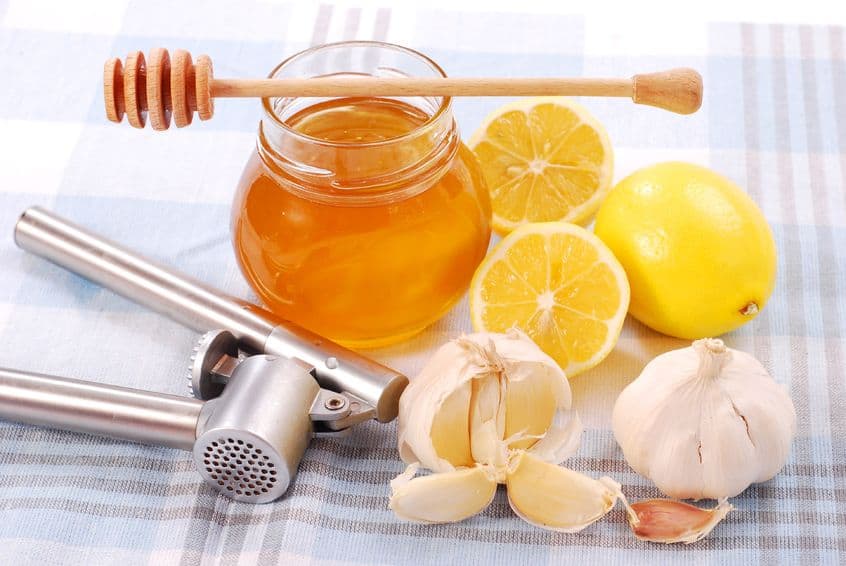
As promised, we’ll be having a look at some remedies that you can make right in the comfort of your home. Apart from the aforementioned essential oil remedies, here are a few clever remedies that you can use in the event of an insect bite.
1) Honey
If you do not mind rolling around in a bit of stickiness, then you’ll love doing an impression of Winnie the Pooh.
Honey is known for its anti-inflammatory properties that make itching a whole lot less tempting. Apply regular honey on the affected area until inflammation comes down.
2) Milk & Water
Here’s another popular technique that is used for more than one remedy. Mix equal parts water and milk and dab on affected area with a thin cloth. Milk neutralizes any acids or venom and prevents infections.
3) Toothpaste
If you look at your tube of toothpaste, chances are that the paste contains some form of mint or peppermint. When used in the affected area, the menthol in the mint creates a cooling sensation that reduces swelling and prevent itching.
4) Tea Bags
Much like a desiccant, tea bags draw fluid out of the stung or bitten area to reduce itching and keep inflammation at bay. They are great for stings which cause pus to build up since they help clean the stuff and prevent infection.
5) Oatmeal
Did you know that one remedy for uncomfortable bug bites might just be sitting pretty in your kitchen cupboard? Thanks to certain anti-irritant compounds, oatmeal works wonders when it comes to relieving itching and swelling.
How To Prevent Bug Bites – 5 Handy Tips
You know what they say; prevention is always better than cure. In this case, this saying is literally the truth.
I’ve seen people neglect a tiny bite only for it to escalate to a massive lesion in a matter of hours. Once you’re bitten, don’t take anything for granted or assume it’s going to be okay.
But wouldn’t it be better if you could avoid getting bitten altogether? Well, now you can thanks to the following tips.
1. Cover your body
Imagine landing upon a buffet on an empty stomach, wouldn’t you rip the hell out of that food? Same goes for you; if you don’t want to be stung or bitten, then cover up your skin.
Not only does this prevent blood-sucking insects from being attracted to your supple flesh, but it also minimizes the surface of contact for other harmful bugs. If you’re outdoors, wear a long sleeved, loose shirt with pants and socks.
2. Apply a repellent
If you don’t want to bother yourself with extra layers of clothing, then nothing works better than applying insect repellents.
Whether you use DEET or one of our all natural essential oil insect repellents, the end result is the same; keeping insects and bugs as far away from your skin as possible.
3. Invest in a fan
Research shows that even the slightest breeze makes it very difficult for most flying insects to fly.
So if you have a well-ventilated home with a constant breeze, it will be impossible even for mosquitoes to find their host.
4. Take a breather
Did you know that most biting insects actually use CO2 to identify other animals and food sources?
So when your heart rate is high or your diet is made up of spicy foods, you are bound to have more carbon dioxide in your body. So, try to relax to remain invisible to most of these bugs.
5. Garlic
If it’s not already a part of your diet, garlic could really help keep insects and bugs at bay. People in bug filled territories should consider eating a few cloves of garlic every day.
As you sweat, the garlic odor sticks to sweat and helps repel certain insects, especially mosquitoes. Perhaps this is where the vampire myth about garlic came from.
Precautions
Always play nice – When you come across some bees, wasps or other bugs, always play nice and never swat at them. This will only infuriate them and cause them to send war hormones all over the place. Instead, slowly and calmly move away from their flight path or hive.
Keep off the grass – As peaceful and calm as a patch of grass may look, chances are that there are thousands of insects that call the outdoors home. Ticks are huge fans of shrubs and grass, especially tall grass. Try to use mowed paths or ensure your lawn is finely mowed.
Know basic first aid – If you live in areas with deadly insects, it helps if you know basic forms of first aid to help treat bites and stings. This will help you take action and possibly save a life before the medics get there.
Final Word: The Takeaway
There you have it; everything you need to know about bug bites all in one convenient place.
My part is done, the rest is all up to you. As we’ve seen, it’s pretty much all but impossible to avoid bugs and insect bites. However, you can take all precautionary measures and have some remedies at hand in case the worst comes to the worst.
With the knowledge on how to proceed after a bug bite, you can at least preserve both your life, limb, and sanity too.


